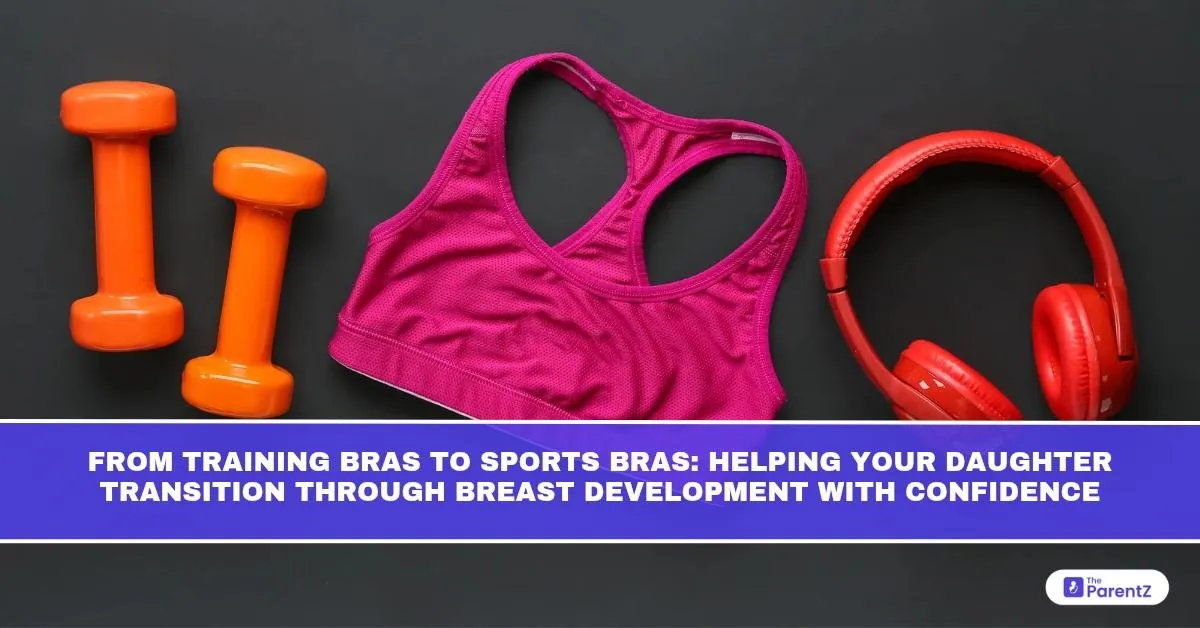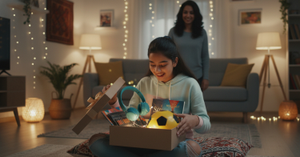It All Started with a Race
Riya had always loved running. But during the school’s annual sports meet, she pulled out of the final round. “It’s uncomfortable,” she muttered, clutching her chest after warm-ups. Her coach thought she was anxious. Her mother knew better. At home, Riya whispered, “It hurts when I run now. I think I need something better than what I wear.”
That “something” was not just a bra; it was the next step in her growth. The simple cotton bralette that once gave her comfort was no longer enough. This is where many girls and parents find themselves stuck: knowing the first bra is no longer working, but unsure what comes next.
Understanding the Transition: What’s Changing in Her Body?
Breast development doesn’t happen all at once. It moves through five distinct stages (called Tanner stages), and each phase comes with different support needs.
- Stage 1: Flat chest before puberty
- Stage 2: Breast buds begin to form
- Stage 3: Breast tissue enlarges; areola may darken
- Stage 4: Nipples become more pronounced
- Stage 5: Fully developed adult breast contour
The transition from training bras to more structured bras usually happens between Tanner Stage 3 and 4 when breast tissue begins to weigh more, skin sensitivity increases, and the body demands better support.
The Indian Association of Adolescent Health, along with guidelines from ACOG (American College of Obstetricians and Gynecologists), stresses that physical activity during puberty should never be compromised due to ill-fitting or inadequate support wear.
Why the Type of Bra Matters at Every Stage
When girls first begin to wear bras (usually soft, non-padded training styles), the goal is emotional comfort and body awareness. But as breast volume increases and physical movement becomes more intense, walking to sports, dance, cycling, or even PE class, a different type of support is medically advisable.
Let’s break down why transitioning bras is not optional; it’s necessary.
1. Minimizing Physical Strain
Without adequate support, developing Cooper’s ligaments (connective tissues in the breast) may stretch, leading to premature sagging or discomfort. A snug, full-coverage sports bra helps distribute movement, reducing strain.
2. Protecting Nipple Sensitivity
Increased nipple projection can cause chafing under clothes, especially school uniforms. A better-lined bra (not necessarily padded) can protect against friction and reduce hypersensitivity.
3. Encouraging Physical Activity
A poorly fitting bra can discourage participation in sports or games, especially in school settings. Adolescent girls already face social pressure; uncomfortable clothing shouldn’t be an added barrier.
Types of Bras During the Transitional Phase
Here’s a medically-informed look at how bra needs evolve:
1. Training Bras
- When to use: Early breast buds, minimal volume
- Features: No wires, thin cotton, slip-on style
- Purpose: Body awareness, basic comfort
- Common Mistake: Continuing to use them beyond their stage
2. Teen Bras / Lightly Lined Bras
- When to use: When breasts are visibly developing, minor bounce starts
- Features: Thin lining, soft cups, wider straps
- Purpose: Gentle shaping, modesty, daily use
- Medical Insight: Prevents skin irritation and posture strain
3. Sports Bras (Low to Medium Impact)
- When to use: During physical activity, dance, PE, cycling
- Features: Elastic underband, stretchable yet firm cups, racerback design
- Purpose: Reduces breast movement, protects from injury
- Tip: Avoid compressive types that “flatten” excessively opt for molded versions suited for teens
4. Camisole Bras
- When to use: Transitional days at home or layered under loose clothes
- Features: Built-in shelf bras inside camisole tanks
- Purpose: Emotional comfort without restrictive wear
Each of these serves a function. The problem occurs when a child continues using one type across all activities and phases. That’s when discomfort and embarrassment set in.
When She Outgrows Her First Bra: Signs to Watch For
- Red marks around chest or shoulders after wear
- Complaints of breast pain after PE class or sports
- Constant adjusting or pulling at straps
- Visible breast bounce while walking or running
- “Spilling” out of the top or sides
- Asking to skip sports due to discomfort
These aren’t just clothing issues. They’re signs that her body is asking for something better.
How to Guide the Transition Smoothly
This stage needs open conversation and quiet observation. Here’s how parents can help:
1. Schedule a ‘Body Check-In’
Every 6–9 months during puberty, revisit the bra fit. Growth may happen subtly but steadily.
2. Let Her Be the Decision-Maker
Lay out a few styles (training, teen bra, sports bra) and ask how each one feels. This gives her control over her comfort.
3. Talk Function, Not Appearance
Instead of “You look older now,” say, “Your body works better when supported well.” Shift focus from appearance to performance and well-being.
4. Introduce One New Style at a Time
For example, if she wears training bras daily, try introducing a sports bra just for PE first. Gradual transitions feel safer emotionally.
Common Mistakes to Avoid
- Buying “fashion bras” too early: Lace, push-up, and padded styles do not serve developmental needs and may affect body image.
- Relying on trial-and-error shopping: Consider getting her measured by trained staff at select stores (many now have female-only staff for teens).
- Overlooking sports bras: Especially in India, many girls do not own one until college, but the benefits begin during middle school itself.
- Focusing on size alone: Fit is a combination of band support, cup coverage, and strap comfort not just number/letter sizing.
What the Medical Literature Recommends
A 2022 PubMed-reviewed article on adolescent breast health emphasized the psychological and orthopedic impact of poorly fitted undergarments during puberty. It advised:
- Structured bras as early as Tanner Stage 3
- Sports bras as preventive tools, not just fitness wear
- Open parent-child discussion as a protective factor against body dissatisfaction
In India, the Indian Journal of Adolescent Medicine also warns of increasing postural issues among teens, with inadequate chest support being a contributing factor.
Final Thoughts for Parents
Your daughter’s relationship with her body is forming quietly between classes, on sports fields, and in front of dressing mirrors. The right bra at the right time is a small gesture that says: “Your comfort matters.” Transitioning from a training bra to more functional ones is not about rushing her into adulthood. It’s about making sure she can move freely, grow confidently, and stay physically active without embarrassment or pain. Whether it’s that first sports event or simply walking to school on a summer day, she deserves to feel at ease in her skin and her clothing. This is not just a wardrobe update, it’s one of the gentlest, most powerful ways to show her: I see you growing, and I’m here for you, every step of the way.








Be the first one to comment on this story.